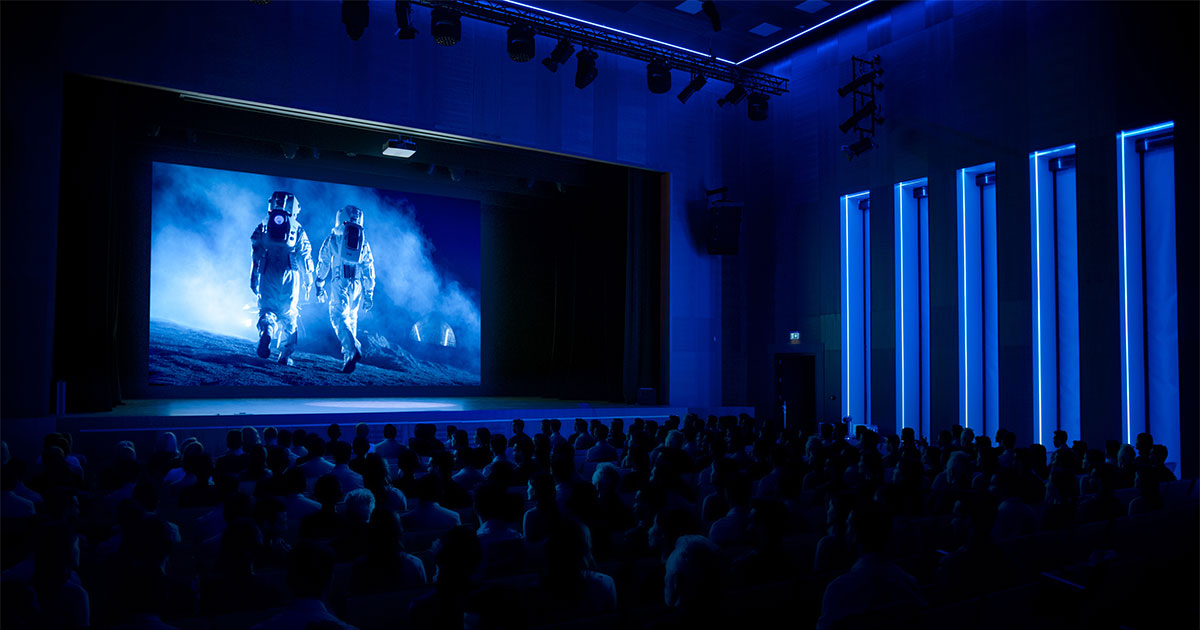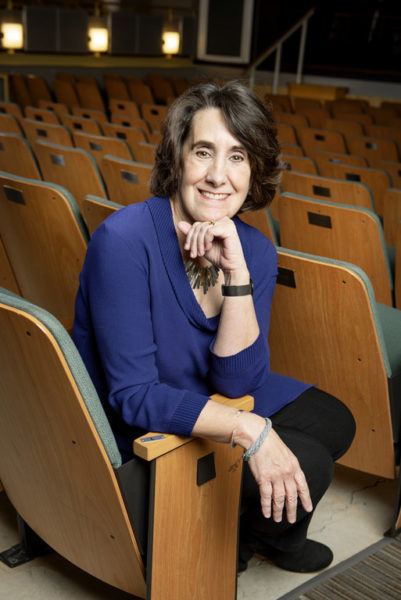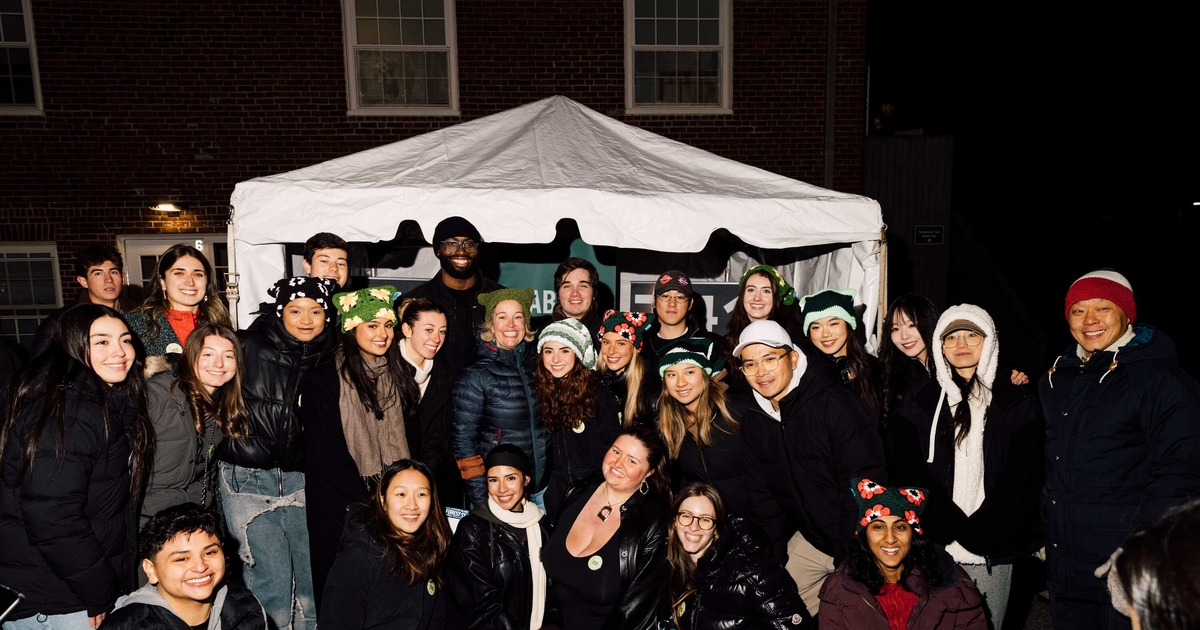Watching Movies that Are Diverse, Challenging, and Great

When people learn that Julie Levinson is a professor of film, they inevitably ask what her favorite movie is. Invariably, she declines to answer. Levinson doesn’t feel the need to arrange her favorites into some sort of hierarchy.
“I have many favorite movies, some of which I teach, some of which I write about,” says Levinson, the chair of Babson’s Arts and Humanities Division. “This need to have a ranking—it’s reductive and silly.”
She feels the same way about critics’ polls such as Sight and Sound magazine’s once-every-decade list of the Greatest Films of All Time. The latest edition of the prestigious list, which surveyed critics, archivists, academics, and others, was released late last year and made headlines with the unexpected film it ranked as No. 1.
Levinson would prefer if Sight and Sound and other similar polls simply put together a collection of important movies that people should know, instead of ranking films, which turns them into a kind of competition. “The problem comes when we assign a numerical value and make it sort of a horse race. It is reductive to say this is No. 1, this is No. 2,” she says. “Our obsession with rankings doesn’t do justice to the value of these works, to the cultural impact of these works, to the reach of these works.”
That being said, Levinson believes that the Sight and Sound list does hold value in the conversations it sparks and the spotlight it shines on a wide range of films and filmmakers who often are overlooked. “That’s vitally important,” she says. The magazine’s latest ranking, which comes at a time of concern for the future of filmmaking, greatly expanded the pool of voters, resulting in a much more diverse list of movies than in decades past. Most notably, more films by women and Black directors were included.
“Do I think it’s a good list? As lists go, it’s a good list,” says Levinson, also an associate dean of faculty at Babson and the William R. Dill Governance Professor. “There are things I would question, but there is value in shining a light on these films that the general population may not know about. There are worthy, provocative films on the list.”
More Voices
The push to create a more diverse list of movies echoes what has been going on in academia for decades, Levinson says, as professors have long argued about who should be read and who should be included in the canon. “Rightfully, people questioned why we are reading just dead white males,” she says. “Many of those works are superb, but whose work haven’t we considered? Who else is worthwhile?”

With more than 1,600 voters, just about doubling the amount who voted in the last poll in 2012, the new Sight and Sound list not only includes a richer variety of filmmaker voices, but it also includes a wider assortment of aesthetics. These are movies not often found at the multiplex. “It’s a showcase for a fuller array of cinema. This is a list that declares that cinema is not just well-made Hollywood films,” Levinson says. “It is also experimental, nonlinear, documentary, and other forms of film. Cinema has a lot of purposes and a lot of tricks up its sleeve.”
Perhaps the most prominent example of that is the No. 1 film on the current Sight and Sound poll. For many years, the No. 1 film had been Orson Welles’ Citizen Kane. Then in 2012, Alfred Hitchcock’s Vertigo took the top spot, pushing Citizen Kane to No. 2. Both films, however, are undeniably great and also classic Hollywood movies.
The new No. 1 film, Chantal Akerman’s Jeanne Dielman, 23 Quai du Commerce, 1080 Bruxelles, is a much different work. Nontraditional, experimental, and lengthy, the film follows a woman at home through the mundane routine of her day.
Levinson finds the movie, the first directed by a woman to reach Sight and Sound’s top 10, profound and fascinating. “One needs to bring different expectations in terms of patience, in terms of pacing, in terms of how it reveals its agenda and narrative to the extent it has one,” she says.
Take a Look
Jeanne Dielman is one of a number of films on the Sight and Sound list that challenge audiences, says Levinson, pointing to movies such as Charles Burnett’s Killer of Sheep (“It’s slow. It’s upsetting. It is stark and in your face. And it is superb.”) and Spike Lee’s Do the Right Thing (“It is as jarring and as pertinent today as it was when it came out.”).
These are films that stand in stark contrast to the crowd-pleasing superhero movies and big-budget sequels that dominate the mainstream movie-making industry today. “They are not made to gratify an audience in traditional ways,” Levinson says. “They will not tell us what we already know, pat us on the head, and necessarily make us feel good.”
“It’s a showcase for a fuller array of cinema. This is a list that declares that cinema is not just well-made Hollywood films. It is also experimental, nonlinear, documentary, and other forms of film. Cinema has a lot of purposes and a lot of tricks up its sleeve.”
Julie Levinson, professor of film and associate dean of faculty at Babson
Many worry that such challenging films will only be harder to make and distribute in the future. “Film is, since its inception, a business, and it is a risky business,” says Levinson, and the industry seems to be less comfortable pursuing movies that aren’t blatantly commercial. “I think there is genuine concern and alarm about what will happen to small-scale, auteur movies,” Levinson says.
Whatever the future brings, Levinson hopes that her students continue to seek out challenging movies, such as those found on the Sight and Sound list, and bring an open mind to them. “When you’re 18 and only know Hollywood movies, it takes some settling in and opening up,” Levinson says. “Take a look before you judge.”
She is reminded of when she took film courses in college. She was once watching a film by Japanese director Yasujirō Ozu, and while it was slow and deliberate, she also came to realize how beautiful it was. “It was just a wow moment,” she says. “It’s what I wish for my students.”
Sight and Sound Magazine’s Top 10 Greatest Films of All Time
- Jeanne Dielman, 23 Quai du Commerce, 1080 Bruxelles
- Vertigo
- Citizen Kane
- Tokyo Story
- In the Mood for Love
- 2001: A Space Odyssey
- Beau Travail
- Mulholland Drive
- Man with a Movie Camera
- Singin’ in the Rain
Posted in Insights





